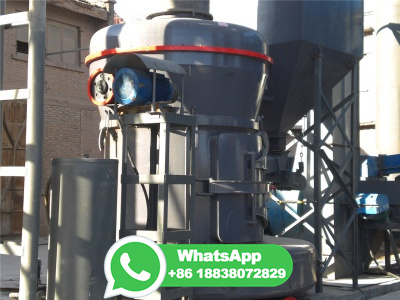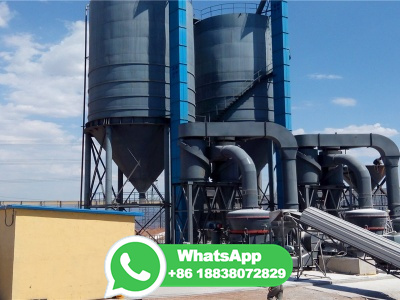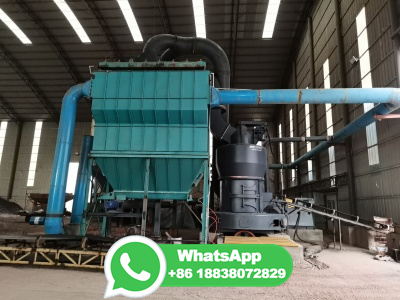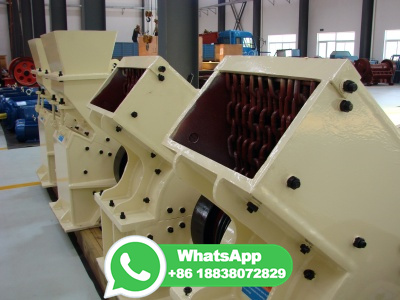
Presentation will help to provide basic principle and brief overview of iron making to steel making process. which is cover each and every stage of iron and steel making process along...
WhatsApp: +86 18203695377
Steel production is highly reliant on coal, which is primarily used as a reducing agent to extract iron from iron ore and to provide the carbon content needed in steel. Over the past decade, total CO2 emissions from the iron and steel sector have risen, largely owning to increases in steel demand.
WhatsApp: +86 18203695377
Molten pig iron (the initial product of smelting iron ore and a precursor to refined iron) was poured into the cupola, which contained perforations at the bottom called tuyeres. ... Kelly's pneumatic process revolutionized the manufacture of iron and steel, which allowed for the largescale economical production of steel for use in railroads ...
WhatsApp: +86 18203695377
Pelletizing is the process of compressing or molding a material into the shape of a pellet. A wide range of different materials are pelletized including chemicals, iron ore, animal compound feed, plastics, waste materials, and process is considered an excellent option for the storage and transport of said materials. The technology is widely used in the powder metallurgy engineering ...
WhatsApp: +86 18203695377
The advantage of steel over iron is greatly improved strength. The openhearth furnace is one way to create steel from pig iron. The pig iron, limestone and iron ore go into an openhearth furnace. It is heated to about 1,600 degrees F (871 degrees C). The limestone and ore form a slag that floats on the surface.
WhatsApp: +86 18203695377
Fig. 1 provides an outline of steel production and associated arsenic element or compounds, from in the primary input to removal technologies in the steelworks. Arsenic mainly comes from iron ore, steel scrap and ferroalloy (Lau et al., 2016).In the sinter plant, arsenide in limonite and magnetite reacts under different atmospheric conditions (both oxidizing and reducing atmospheres may exist ...
WhatsApp: +86 18203695377
worldsteel expects that global endoflife scrap availability will reach about 600 Mt in 2030 and 900 Mt in 2050, a growth of more than 500 Mt in one of our main steelmaking raw materials in the next 30 years. The steelmaking process is able to remove most impurities that may be present in scrap steel. Hence 'downcycling' of steel scrap ...
WhatsApp: +86 18203695377
At the most basic, steel is made by mixing carbon and iron at very high temperatures (above 2600°F). Primary steelmaking creates steel from a product called "pig iron.". Pig iron is smelted iron, from ore, which contains more carbon than is correct for steel. The steelmaker uses a system that bubbles oxygen through melting pig iron.
WhatsApp: +86 18203695377
Bessemer converter, schematic diagram. The Bessemer process was the first inexpensive industrial process for the mass production of steel from molten pig iron before the development of the open hearth key principle is removal of impurities from the iron by oxidation with air being blown through the molten iron. The oxidation also raises the temperature of the iron mass and keeps it ...
WhatsApp: +86 18203695377
Order my new children's book on Amazon! Orville the Iron Ore on Amazon: https:///2IXVkFiSteel and iron is an essential part of our everyday life. It m...
WhatsApp: +86 18203695377
Turning low grade iron ore into the most used metal in the world is no easy task. Learn how this hot process works on Discovery Channel's "HowStuffWorks" sho...
WhatsApp: +86 18203695377
Another factor has received less attention. DRI steelmaking requires a higher grade of iron ore than blast furnaces, the dominant global process. DRgrade iron ore ideally has an iron (Fe) content of 67% or more and such deposits are scarce only a small percentage of global seaborne iron ore comes close to DRgrade.
WhatsApp: +86 18203695377
Iron ore and steel 6minute video explains the mining and processing of iron ... INTRODUCTION TO MATERIALS This is the first post on materials.
WhatsApp: +86 18203695377
By helping steelmakers curb their greenhouse gas emissions, iron ore miners can advance their own decarbonization efforts. Decarbonizing steel production, which generates about 7% of global CO 2 emissions, is a vital step toward achieving a netzero world.
WhatsApp: +86 18203695377
DRI with hydrogen brings this below mt/CO2 per mt, Singapore Exchange said at the SGX Iron Ore Forum in May. In the European Union, the race is on to make green steel commercially viable. ... at Baosteel Zhanjiang Iron Steel Co., Ltd using the ENERGIRON process developed by Tenova together with Italian plantmaker Danieli. This follows a ...
WhatsApp: +86 18203695377
DRI is a proven technology to use H2rich gas for steel making from iron ore, producing over a 100 million tons of iron and ultimately over 90 million tons of steel in 2018. ... In part, this reflects the ability of carbon capture to manage and eliminate the byproduct process chemical remissions from iron ore refining as well as emissions from ...
WhatsApp: +86 18203695377
The blast furnace and direct reduction processes have been the major iron production routes for various iron ores ( goethite, hematite, magnetite, maghemite, siderite, etc.) in the past few decades, but the challenges of maintaining the iron and steelmaking processes are enormous. The challenges, such as cumbersome production routes, scarcity of metallurgical coke, high energy demands ...
WhatsApp: +86 18203695377
Steel Smelting, Alloying, Refining: In principle, steelmaking is a melting, purifying, and alloying process carried out at approximately 1,600° C (2,900° F) in molten conditions. Various chemical reactions are initiated, either in sequence or simultaneously, in order to arrive at specified chemical compositions and temperatures. Indeed, many of the reactions interfere with one another ...
WhatsApp: +86 18203695377
Steelmaking is the process of producing steel from iron ore and/or scrap.
WhatsApp: +86 18203695377
Those two nations are particularly relevant for iron ore's future; China is the world's biggest steel maker, and India plans to double its steel industry by 2030, albeit with the help of a ...
WhatsApp: +86 18203695377
The "Iron Ore Challenge": Commercial iron ores with iron content of 62% or higher are projected to be in short supply by the early 2030s. Hydrogen or natural gasbased steelmaking requires ores ...
WhatsApp: +86 18203695377
Process of Steelmaking from Iron Ore. Steel is an alloy consisting mainly of iron, carbon and other elements. According to its carbon content, iron can be divided into pig iron and wrought iron. Pig iron contains between and percent carbon, wrought iron less than percent and steel between ( and percent).
WhatsApp: +86 18203695377
Therefore, the steel ind ustry would benefit from the development of a low capital cost process, scalable to large capacities that can take advantage of the availability of inexpensive iron ore concentrate, and can use fuels that significantly reduce potentially harmful greenhous e gas emissions.
WhatsApp: +86 18203695377
The process should lower carbon dioxide emissions in all stages of steelmaking, including pelletizing iron ore, reducing iron oxides to iron, and producing crude steel. Source: Adapted from HYBRIT.
WhatsApp: +86 18203695377
The quality of Indian iron ore resources is generally good with high iron content and high percentage of lumpy ore. More than 85% of the hematite ore reserves are of medium to highgrade (+62% Fe) and are directly used in blast furnace and in directreduced iron (DRI) plants in the form of sized lump ore, agglomerated sinter, and agglomerated pellets (Iron and SteelVision, 2020).
WhatsApp: +86 18203695377
In this new process, iron ore fines are mixed with sustainable raw biomass material (like agricultural waste) and heated using a combination of gas released by the biomass and high efficiency microwaves powered by renewable energy, turning the iron ore into metallic iron. ... But the process of making steel from iron ore takes a lot of energy ...
WhatsApp: +86 18203695377
First, the raw materials, either iron ore or scrap iron (depending on the process), are converted into molten steel. The orebased process uses a blast furnace or smelter and the scrapbased process uses an electric arc furnace. Next, the molten steel is poured and solidified in a continuous caster.
WhatsApp: +86 18203695377
Steelmaking requires stripping oxygen from iron ore to produce pure iron metal. In traditional steelmaking, this is done using coal or natural gas in a process that releases CO₂. In green ...
WhatsApp: +86 18203695377
Steel production causes significant emissions of carbon dioxide. To decarbonize steel production and its high carbon dioxide emissions, Fraunhofer researchers, TS ELINO and Salzgitter AG are working on converting an existing steel mill to climateneutral production methods. The aim is to produce steel by the direct reduction of iron ore with hydrogen, which would completely replace ...
WhatsApp: +86 18203695377
An ironworks (or iron works) is an industrial plant for the production of steel from iron ores! Before the iron ores can be fed to the ironworks, they must first be mined (ore extraction) and specially processed for the blast furnace process (ore processing). These process steps are described in more detail in the following sections.
WhatsApp: +86 18203695377
The sponge iron is melted into the actual crude steel. This process will be discussed in more detail in the next section. In the directreduced iron (DRI) process, the iron ores are reduced directly to sponge iron by gaseous reducing agents! Electrosteel process. In the electric steel process, the sponge iron obtained from the direct reduced ...
WhatsApp: +86 18203695377
At Tata Steel, the process of making steel is consistently being improved to make it more efficient and environment friendly. To know more about the process, visit the website. ... From coarse and rocky iron ore to tough and shiny steel the making of the alloy is a journey that starts from the crust of the earth, involves complex ...
WhatsApp: +86 18203695377
The blast furnace is the first step in producing steel from iron oxides. The first blast furnaces appeared in the 14th century and produced one ton per day. Even though equipment is improved and higher production rates can be achieved, the processes inside the blast furnace remain the same.
WhatsApp: +86 18203695377